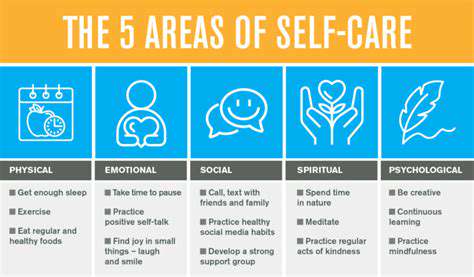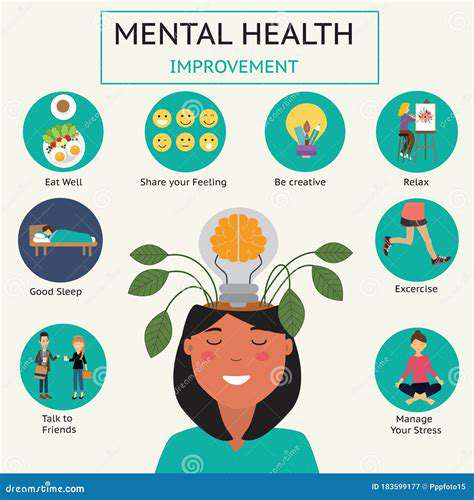Understanding Phobias: Overcoming Irrational Fears
Strategies for Overcoming Phobias: Practical Steps Towards Freedom

Understanding Phobias
Phobias represent intense, irrational fears of specific objects or situations, often leading to significant life disruptions. These fears manifest in avoidance behaviors and emotional distress that can feel overwhelming. Identifying the underlying causes of a phobia forms the foundation for creating meaningful coping mechanisms. While some phobias stem from traumatic experiences, others may develop through observational learning or even genetic predispositions.
The unique characteristics of each phobia - whether it involves flying, enclosed spaces, or social interactions - require tailored interventions. Gaining deep insight into how the phobia operates in one's life proves essential for developing effective counterstrategies. This understanding helps distinguish between rational concerns and irrational fears that characterize phobic responses.
Cognitive Behavioral Therapy (CBT)
Among therapeutic approaches, CBT stands out for its demonstrated effectiveness in phobia treatment. This method works by restructuring maladaptive thought patterns while simultaneously modifying avoidance behaviors. Therapists guide patients through exercises that challenge catastrophic thinking and replace it with more balanced perspectives.
The exposure component of CBT typically follows a structured hierarchy, beginning with imagined scenarios before progressing to real-world encounters. This systematic approach allows the nervous system to gradually recalibrate its threat response, ultimately diminishing the phobia's intensity. Many patients report significant improvement after completing a full course of CBT treatment.
Exposure Therapy
As a specialized form of CBT, exposure therapy focuses specifically on confronting feared stimuli in controlled settings. The process might involve virtual reality simulations for phobias like fear of flying, or in vivo exposure for animal-related fears. Therapists carefully monitor physiological responses to ensure the experience remains therapeutic rather than traumatic.
The principle of systematic desensitization remains central to exposure therapy's effectiveness. By incrementally increasing exposure intensity while maintaining emotional safety, individuals develop new neural pathways that associate the previously feared stimulus with feelings of safety and control.
Relaxation Techniques
Various relaxation methods serve as powerful tools for managing phobia-related anxiety. Diaphragmatic breathing exercises help regulate the autonomic nervous system, while progressive muscle relaxation addresses physical tension. Mindfulness practices cultivate present-moment awareness that can disrupt panic cycles.
Consistent practice of these techniques builds what psychologists call relaxation-induced resilience, creating an internal buffer against phobic reactions. Many individuals report that regular relaxation practice enhances their ability to implement other therapeutic strategies.
Support Systems and Lifestyle Changes
Developing a robust support network significantly impacts phobia recovery outcomes. Trusted individuals can provide emotional scaffolding during challenging exposures, while support groups offer validation through shared experiences. This social reinforcement often makes the difference between sustained progress and relapse.
Complementary lifestyle modifications - including regular physical activity, nutritional balance, and sleep hygiene - create physiological conditions conducive to anxiety reduction. These foundational health practices support neurological changes that facilitate fear extinction. Many patients find that improving overall wellness makes phobia treatment more effective.
Professional Help
Consulting with mental health specialists remains the gold standard for phobia treatment. Clinicians bring expertise in differential diagnosis, ensuring that phobias aren't confused with other anxiety disorders. They also monitor for comorbid conditions that might complicate treatment.
The therapeutic relationship itself serves as a corrective emotional experience, providing a safe space to process fears while modeling healthy coping. Ongoing professional guidance allows for treatment plan adjustments based on individual response patterns, optimizing outcomes over time.
Read more about Understanding Phobias: Overcoming Irrational Fears
Hot Recommendations
- AI Driven Personalized Sleep Training for Chronic Insomnia
- AI Driven Personalization for Sustainable Stress Management
- Your Personalized Guide to Overcoming Limiting Beliefs
- Understanding Gender Dysphoria and Mental Health Support
- The Power of Advocacy: Mental Health Initiatives Reshaping Society
- Building a Personalized Self Compassion Practice for Self Worth
- The Ethics of AI in Mental Wellness: What You Need to Know
- AI Driven Insights into Your Unique Stress Triggers for Personalized Management
- Beyond Awareness: Actionable Mental Health Initiatives for Lasting Impact
- Creating a Personalized Sleep Hygiene Plan for Shift Workers











